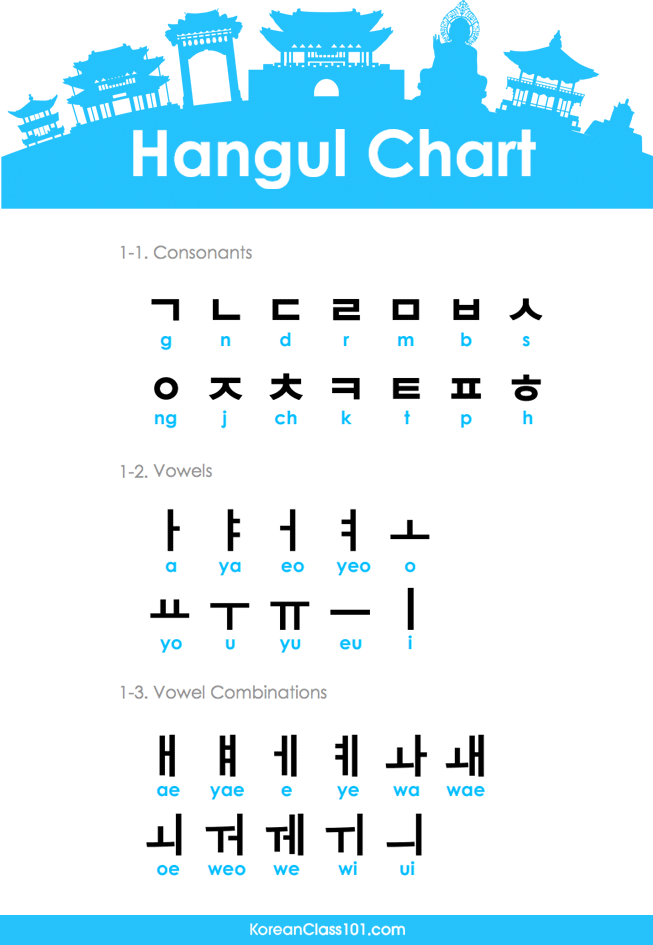Korean
Comparatively speaking, Korean is a relatively easy language to learn. This is because once you master how to read and write in Korean, which is easier than in most other languages, the learning process gets much easier. Korean has some exceptions in its pronunciation rules, but in general, it is easy to learn to pronounce Korean fluently.
The Korean alphabet consists of twenty-four basic characters: fourteen consonants and ten vowels. These basic syllables can form more compound consonants and vowels, and we can divide them into independent syllables that we recognize as “letters” in Korean.
We’re not going to go over the pronunciation of all the consonants and vowels here, but if you’re interested, you can listen to our pronunciation series designed to help you master Korean pronunciation. Rather, now we’re going to discuss some of the more interesting aspects of pronunciation.
1. A Korean Syllable
In Korean, no consonant can stand alone to make a sound. Therefore, Korean people always add a vowel to complete the syllable so that they can pronounce it.
For example, the consonant that is equivalent to the sound of the English alphabet “-s” is ㅅ in Korean. While in English you can pronounce “-s” on its own as in “sky,” “ski,” or “school,” in Korean you have to add the vowel ㅡ (eu) to make it 스 (seu).
This explains one of the reasons that Korean people pronounce words that come from English using a different pronunciation.
2. Double Consonants
Out of the fourteen basic consonants, five of them, which are ㄱ, ㄷ, ㅂ, ㅅ, and ㅈ, can form double consonants.
ㄱ, ㄷ, ㅂ, ㅅ, and ㅈ respectively have the sounds of [-g], [-d], [-b], [-s], and [-j/-z], and when you double them and write ㄲ, ㄸ, ㅃ, ㅆ, and ㅉ, they have the sounds of [-kk], [-tt], [-pp], [-ss], and [-jj/-zz].
The easiest way to differentiate these double-consonant sounds from single-consonant sounds is to remember that the double-consonant sounds are a little more high pitched than the other sounds.
3. Aspirated Consonants
Along with the double consonants, there are aspirated consonants, which are very easy to pronounce because English has the same sounds.
They are ㅋ [-k], which is an aspirated version of ㄱ [-g], and ㅌ [-t], the aspirated version of ㄷ [-d], and ㅍ [-p], the aspirated version of ㅂ [-b], and ㅊ [-ch], the aspirated version of ㅈ [-j/-z].
4. The Consonant ㄹ
In Korean, the consonant ㄹ looks a bit like a curl and implies that it sounds like [-r] or [-l], for which we have to curl our tongue. But the English pronunciation of [-r] doesn’t exist in Korean, and the Korean ㄹ is more like the Spanish [-r] when it’s at the beginning of a syllable. And it sounds a little less strong and “curly” than the English [-l] when it’s at the end of a syllable.





 Say Hello in Korean
Say Hello in Korean Introduce Yourself
Introduce Yourself Korean Alphabet
Korean Alphabet Thank You in Korean
Thank You in Korean
No comments so far.